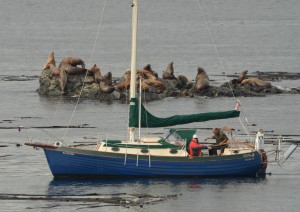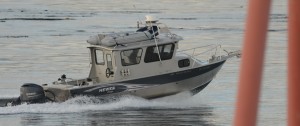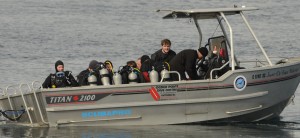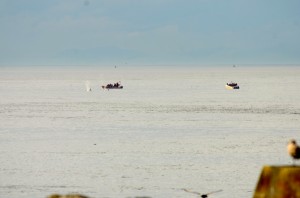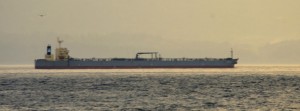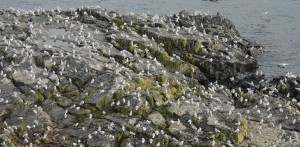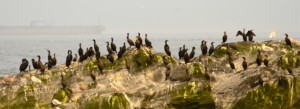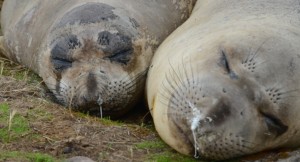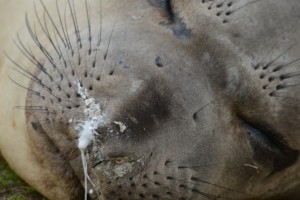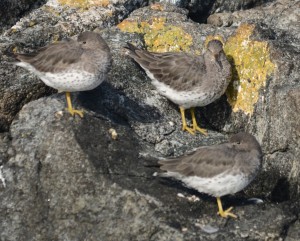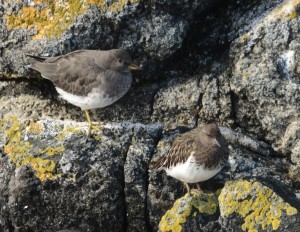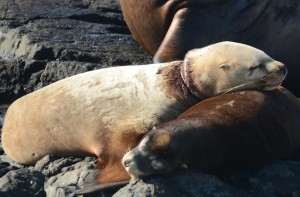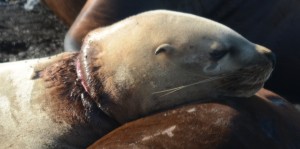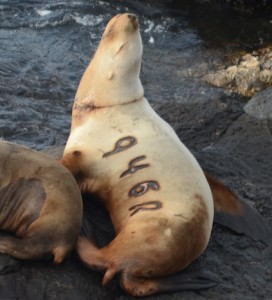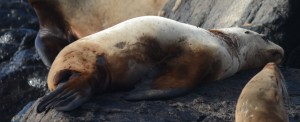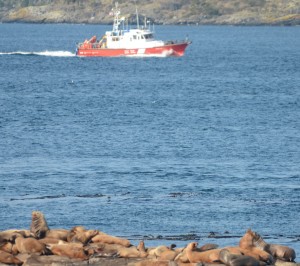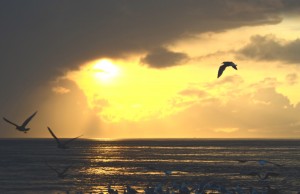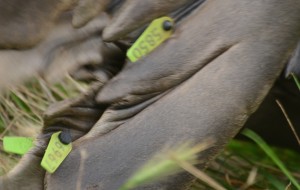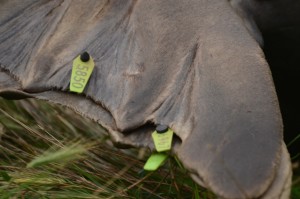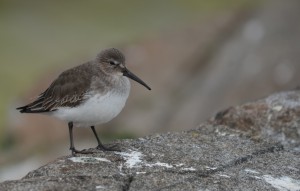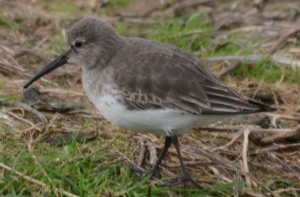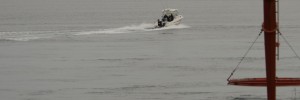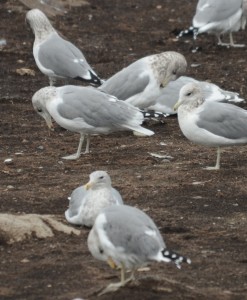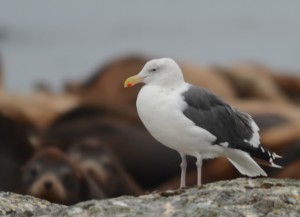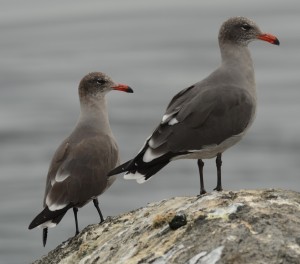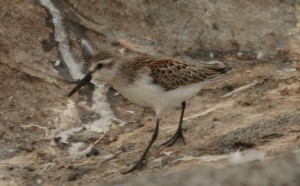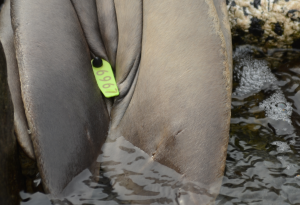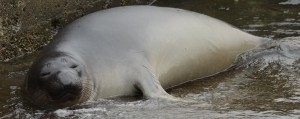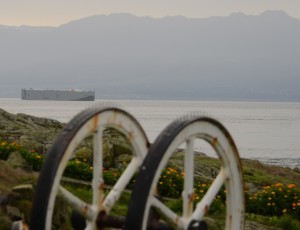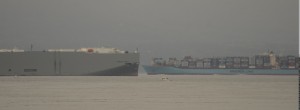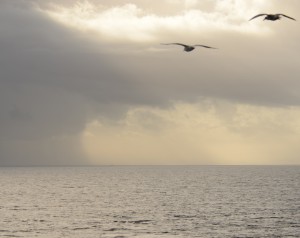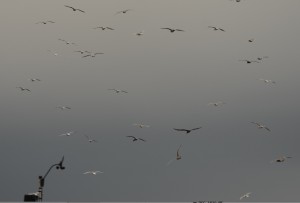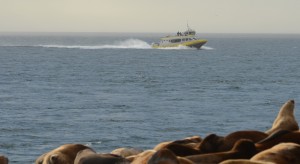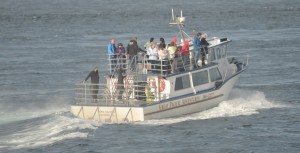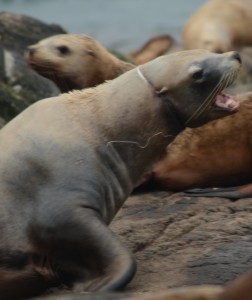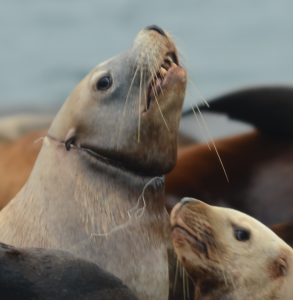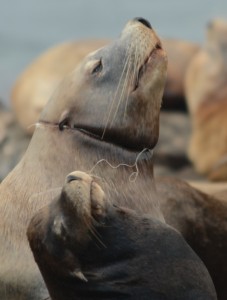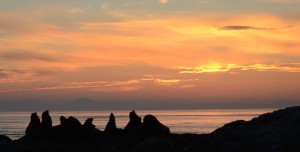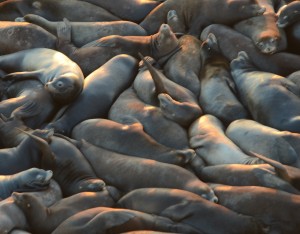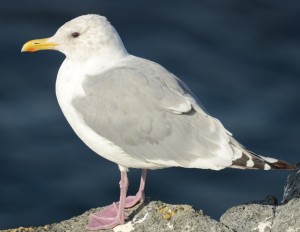There were gentle breezes from the north and northeast with mostly sunny skies today, a nice reprieve from yesterday. There was no groundswell and the barometer continued its 20 degree climb until late afternoon. As the sun set, the breeze swung over to the southwest and now that is night, it is back to northwest. The outlook is a switch back to southeast winds as another low approaches.
There was quite a bit of fishing activity in the distance around Race Rocks but nothing observed in the Ecological Reserve itself. Cedar, a sailboat registered in Victoria cut right across the kelp beds north and east of Turbine Rock, under power and managed to come out the other side without stalling or snagging a rock.
A few sports-fishers passed through, doing the speed limit with two exceptions.
Ogden Point Dive boat, JdF Warrior spent the day, as is usual on Saturdays, diving in the Ecological Reserve.
Up to three o’clock, just one whale watching boat was observed in the Reserve. After three-thirty a dozen boats went through on their way, to and from the whales.
It was a quiet day until mid afternoon, in terms of ecological observations. I finally got a photo of one of the Killdeer that I hear calling just about every night. Until today I have just had glimpses of it in the dark.
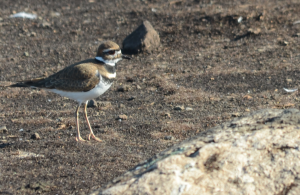
I finally saw one of the mysterious Killdeer that usually arrive after dark and leave before dawn. The distinctive call drew me to the bird.
There didn’t seem to be much happening so I had a look at the underwater camera and in a few minutes had seen three species of rockfish, Sebastes melanops, s. maliger and S. nebulosus, large, adult male and large female greenlings and then of course the lavendar carpet of coralline algae, orange cup-corals Balanophyllia elegans, the ubiquitous red urchins, Stronglyocentrotus fransiscanus and the beautiful white plumose anemones Metridium farcimen. Wow, that is a window on the underwater world.
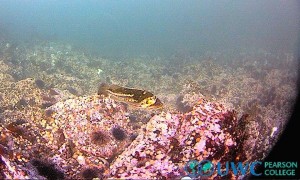
Marine protected areas can grow big healthy, rockfish like this one that will then disperse young to populate adjacent fishing areas.
After 3PM there was an explosion of cetacean activity and mixed species feeding aggregations all around Race Rocks. I didn’t see any whales right in the Ecological Reserve but they had the place surrounded. There were at least four Humpback Whales and three separate pods of Killer Whales.
The Humpbacks were breaching and fin slapping as well as exhibiting their more dignified behaviours of blowing and diving. A whale watching boat skipper said on the VHF radio, that he had seen seven Humpbacks between Secretary and Race Rocks and there were at least another two to the east of Race Rocks. The Killer Whales were slowly heading to the west and again the whale watchers said that there were both Southern Residents (J & K) and transient or Bigg’s Killer Whales to the east of Race. The Sea Lions were also off foraging today and groups of Steller Sealions could be seen working feed together in Race Passage and beyond. There were many thousands of birds forming some really huge, mixed species, feeding flocks to the southeast. Race Rocks really is an amazing location for both biodiversity and productivity.
Now to the more mundane: for an unknown maintenance experience, I tackled the grease gun today and greased the nipples on the desalinator and the winch. I continued to clean the roof of the energy building but its low centre and dam forming aluminum struts are starting to frustrate my efforts.
It was so nice in the afternoon, I thought I would make more hay for the compost but was sorely defeated by the weed-eater, which refused to start. This was the beginning of my mechanical problems. Next, I went to run the desalinator and the high-pressure pump wouldn’t start. My faith in engineering was restored by the trusty Lister generator. At the turn of the switch, it whined and roared into life and topped up the solar powered batteries for the island. With another turn of the switch it shuddered and stopped and silently cools as I write this blog.

